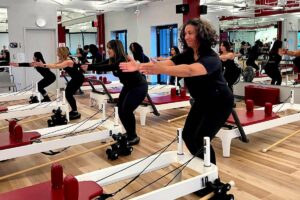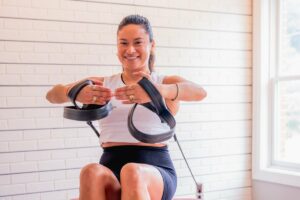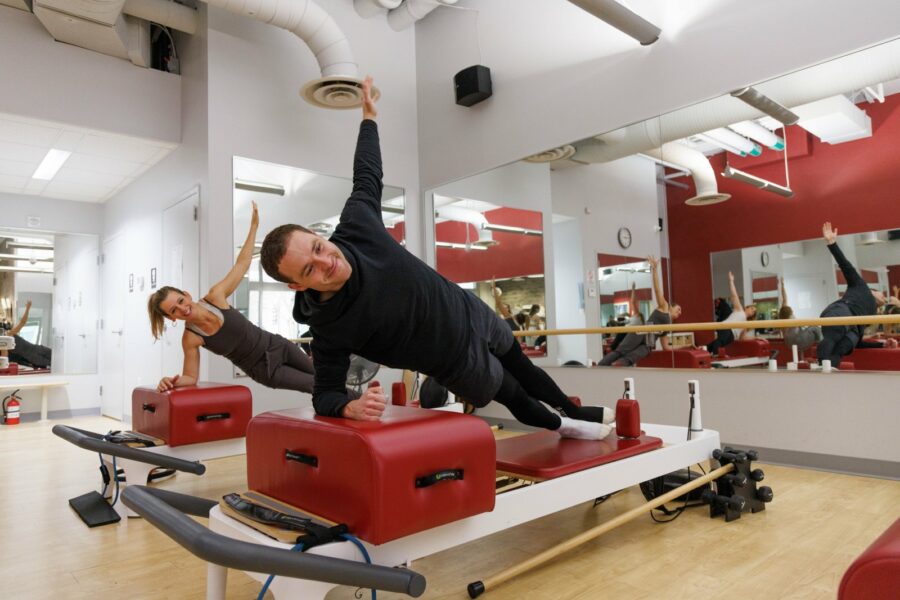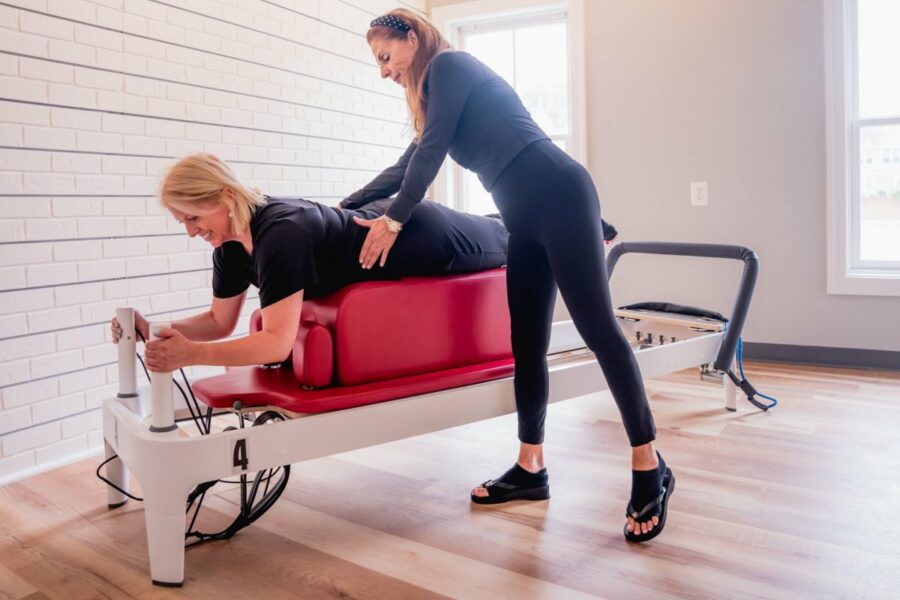 Before and immediately after a baby arrives, it can be challenging for women to balance staying active and giving their bodies the rest necessary to support a healthy baby and mother. While exercise is great for health, it should be approached carefully during pregnancy. However, Reformer Pilates classes offer a simple solution to keep women active safely.
Before and immediately after a baby arrives, it can be challenging for women to balance staying active and giving their bodies the rest necessary to support a healthy baby and mother. While exercise is great for health, it should be approached carefully during pregnancy. However, Reformer Pilates classes offer a simple solution to keep women active safely.
If you have struggled to stay active during pregnancy or after the baby has arrived, Pilates is an accessible option. Its gentle support, adjustability, and physical benefits make it a worthwhile inclusion in any pregnant woman’s life!
Why Do Pilates Before Birth?
Staying active is always beneficial, but it may be doubly so when mother and baby work together. Studies indicate that exercising during pregnancy is associated with many positive changes, such as a reduction in the incidence of preeclampsia, preterm birth, gestational diabetes, and sleep apnea, among others.
Additionally, during pregnancy, women’s bodies undergo significant changes. The changing shape around the abdomen shifts the musculature of the core and hips, which can cause pain, discomfort, and other challenges, such as urinary incontinence. Exercise during this time can keep the muscles strong and functional while reducing the incidence of unwanted side effects.
Given all these benefits, which exercise should pregnant women choose? High-impact workouts such as running can place undue strain on the joints due to the extra weight of the baby and associated weight gain. The shock-based movements can be uncomfortable for muscles already strained in the core region.
Pilates combats these issues by offering a low-impact alternative to support the body and gently strengthen muscles. Bear in mind to focus on deep breathing and the mind-body connection, which can be invaluable during delivery!
How to Do Prenatal Reformer Pilates Safely
Pilates is a very safe form of exercise, but there are still a few considerations to keep in mind:
- Be mindful of blood flow– As pregnancy progresses, the growing fetus will put increasing pressure on the mother’s blood vessels. After the first trimester, it is generally considered good practice to stop doing Pilates exercises that require the mother to lie flat on her back, which may impact her blood flow.
Stop twisting– Deep twists with the abdomen can put pressure on the womb. Open twists are a great alternative that avoids this problem. - Skip the forward flexion– Certain Pilates exercises that encourage forward flexion can pull the abdominal muscles tight around a pregnancy bump. This may increase the risk of diastasis recti or the abdominal muscles slightly pulling apart, so skip these exercises after the first trimester.
Is Pilates After Birth Worth It?
Once the baby is born, the body will undergo another significant shift in hormones and composition. Research shows that mental and physical fatigue surges alongside slow recomposition of the muscle structure.
Pilates has been shown to assist with this process, reducing exhaustion and improving the muscles’ ability to return to their original position.
Increasing the elasticity of the muscles helps mothers create a strong abdominal core and pelvic floor, which can ease postpartum symptoms such as incontinence and low back pain.
Staying Safe During Postnatal Pilates
After birth, women are encouraged to return to being physically active when they are able. However, there are a few small adjustments they should make when first returning to their Pilates workouts:
- Keep it simple – Avoid intense abdominal exercises until the body has had time to recover. Keep in mind that the muscles in the stomach have just been distended and need time to recover to support the core properly.
- Go horizontal – Pregnancy causes the ligaments and fascia to stretch and weaken, allowing the baby to exit the birth canal. Right after birth, women should avoid long sequences of vertical exercises, which subject the pelvic floor to the forces of gravity while it is still weak and recovering.
- Be gentle – The postnatal period is full of new challenges and usually requires less sleep. Keep up with Pilates, but do not push beyond the body’s limits. Get enough rest, do stretches, and take a break when needed.
Try Reformer Pilates Classes During and After Pregnancy
 The effects of pregnancy can lead to significant changes in a woman’s body. Thankfully, Pilates remains an accessible form of exercise for the duration of pregnancy and even afterward.
The effects of pregnancy can lead to significant changes in a woman’s body. Thankfully, Pilates remains an accessible form of exercise for the duration of pregnancy and even afterward.
If you are considering how Pilates can help keep you strong and energized during and after pregnancy, try a class for yourself to see how it works! Contact RTR Pilates today to sign up.




